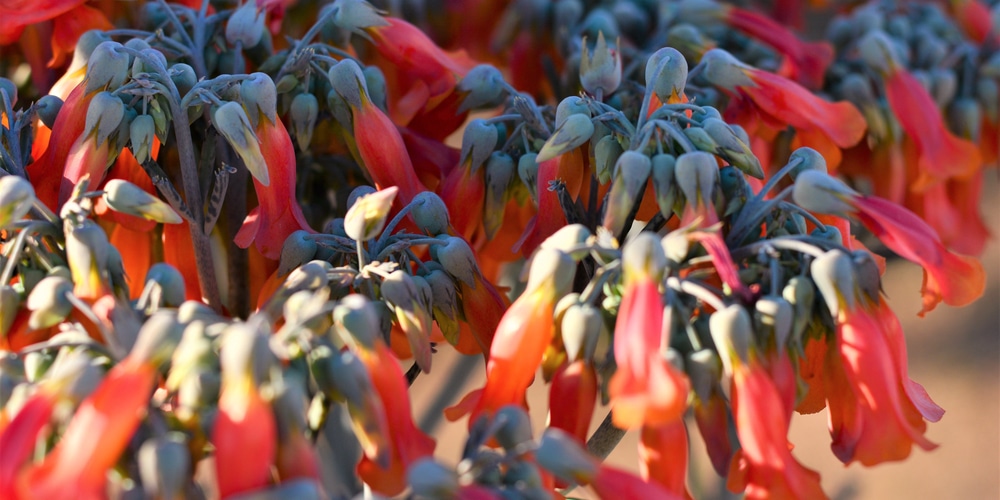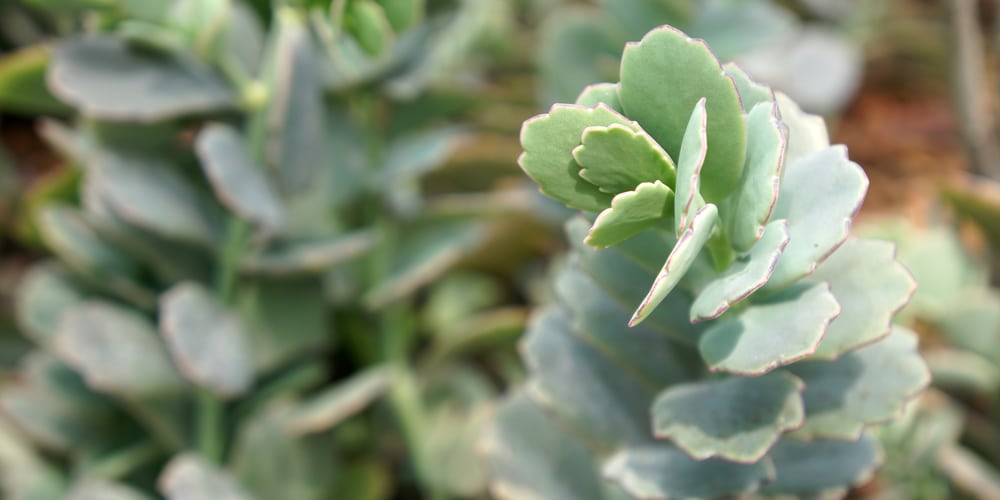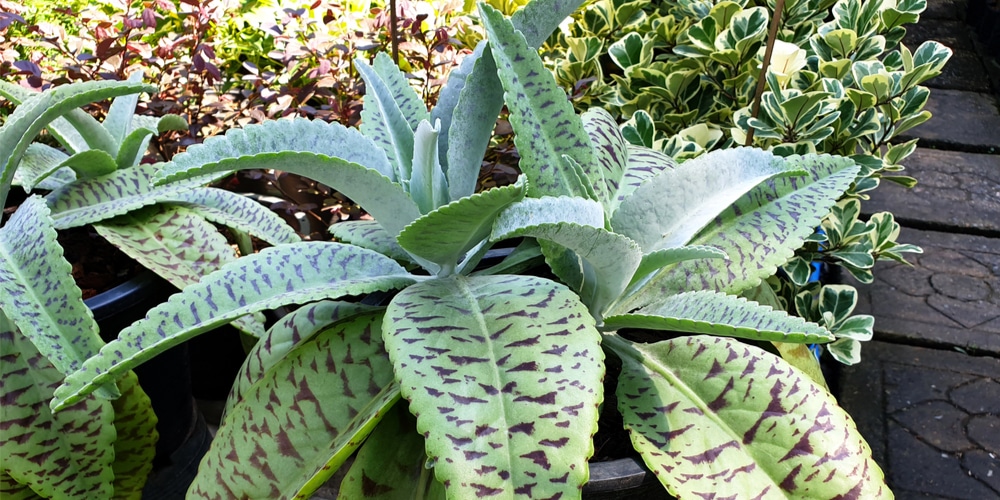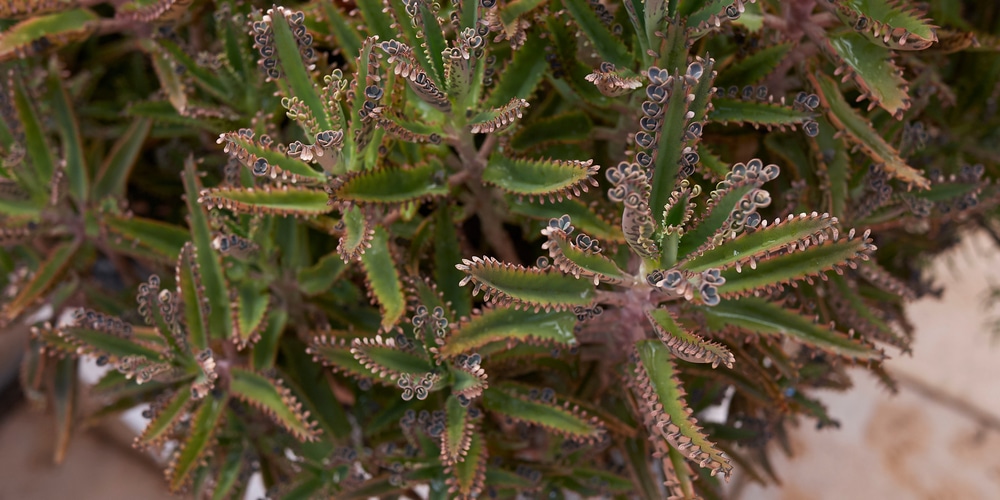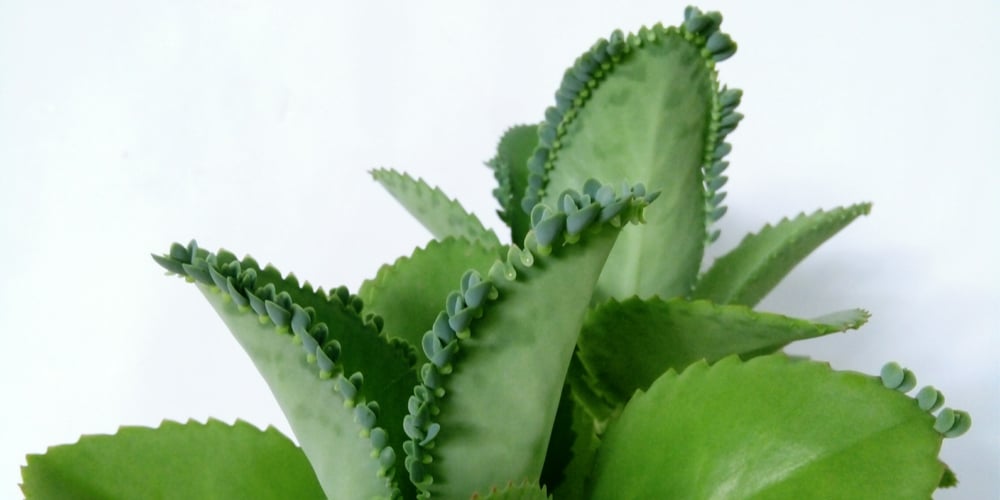Mother of thousands are an attractive and unique succulent. They are a hardy plant with the Latin name Kalanchoe and are also commonly called the alligator plant, devils’ backbone, or Mexican hat plant. There’s around thirty mother of thousands varieties. We cover the most common ones in this article.
The mother of thousands gets its name because it produces thousands of tiny baby plants on the edge of its leaves. This plant is native to Madagascar. It has attractive dark green oval leaves and flowers annually.
Mother of thousands is generally considered easy to look after and are great for beginners and those who have a busy lifestyle. There are many different Mother of thousands varieties. Let’s look at the most popular and unique of these house plants!
Mother of thousands varieties
There are about thirty mother of thousands varieties. Some produce so many plantlets around the edges of their leaves that they are known as the mother of millions rather than thousands.
Most of these varieties grow in the wild in Africa and in living rooms worldwide as a houseplant. These plants are generally considered to be hardy and are very rarely attacked by pests. Here’s six interesting mother of thousands varieties:
Kalanchoe daigremontiana
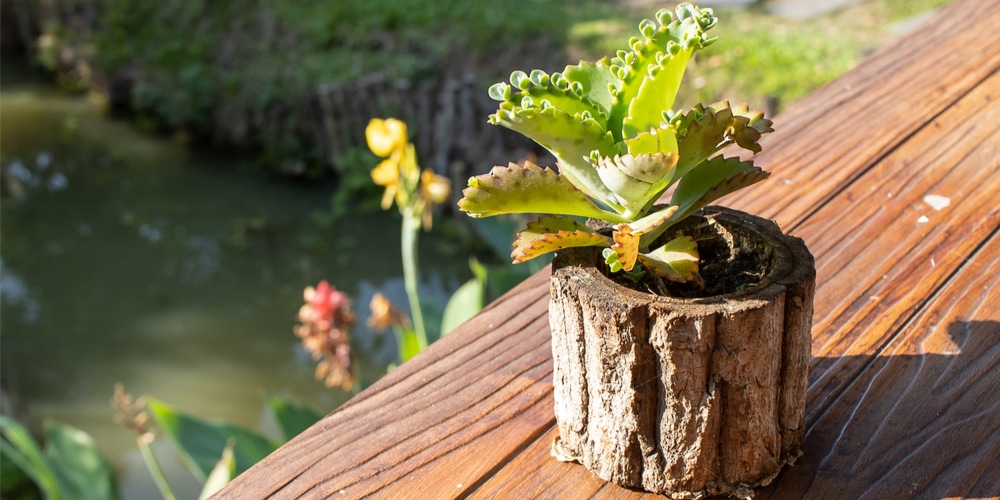
The kalanchoe daigremontiana is one of the most common mother of thousands varieties and is what most people think of when they imagine a mother of thousands plant. It’s also known as the Mexican Hat Plant, Chandelier Plant, or the Mother of Millions.
This mother of thousands variety is a perennial with upright shoots that grow up to between ten and twenty inches tall. The leaves have a unique triangular shape and are a lovely bluish-green color which has fain brown spots.
Many people say that the bare stems and the shape of the leaves make this mother of thousands variety look like a mini palm tree. The plant can propagate from plantlets that grow along the leaf’s edges; they are then dropped and grow in the nearby soil.
This mother of thousands variety is poisonous to humans and animals if ingested.
Kalanchoe delagoensis
The Kalanchoe delagoensis is a similar Mother of thousands, commonly called Mother of Millions and Chandelier plant. This species also reproduces by growing baby plantlets along its leaves. These plantlets fall into the soil or are carried in the breeze until they drop and grow somewhere else.
The amazing thing about this mother of thousands plant is that it doesn’t even need soil to grow. It can grow, amongst cactus spines or on the bark of trees, in leaf litter, or in a crack on a cement patio in a suitable climate.
This plant can quickly reproduce and is drought resistant. It can be grown outside in the right climate and is also a popular house plant. This plant is considered an invasive species in some places such as Eastern Australia and the Pacific islands. The plants can grow up to two feet tall and flowers during the winter.
Kalanchoe fedtschenkoi
The Kalanchoe Fedtschenkoi is also called the South American air plant due to its ability to grow without soil. Other nicknames include Lavender Scallops or Amethyst scallops and Aurora-borealis plant.
This species originates in tropical climates and is grown as a house plant worldwide. It’s best suited to temperate regions and has attractive metallic green leaves, transforming into a pink or red when left in the full sun. These plants are hardy and resilient as they cope well with drought. They produce purple or red bell-shaped flowers in the winter months. Blooms are loosely arranged in clusters that attractively droop from upright stems.
Kalanchoe gastonis-bonnieri
This attractive plant is also called the Tree of Life, Palm Beachbells, or Leaf of Life. It’s considered good luck and is a great plant to give as a housewarming gift.
This mother of thousands variety is very popular as it has waxy red candelabras. Its foliage grows in large rosettes and is a light green color with purple edges and blotches. This species is one of the largest of the mother of thousands of varieties, and it has large leaves that produce plantlets.
Kalanchoe х houghtonii
The kalanchoe x houghtonii is a Mother of thousands hybrid, which is also considered good luck as it encourages health and prosperity. The plant is commonly called Mother of Millions, Mexican Hat Plant, and the Good-Luck Plant.
This species is easily identifiable as it has V-shaped leaves and grows very tall. It’s commonly grown as a house plant and in tropical gardens. In some countries, this plant is considered a pest as its invasive and is even spreading along the sides of roads. The plants spread quickly and are indestructible and hard to get rid of. This variety is also toxic to livestock, including cattle and sheep.
Kalanchoe pinnata
The Kalanchoe Pinnata is another variety of mother of thousands which is commonly called Life plant, Miracle Leaf, and Cathedral Bells. These plants can live as air plants and attach themselves to other plants or structures.
The plant is known as Miracle Leaf because, like all members of the Kalanchoe family, small plantlets grow from the edges of the plant’s leaves. These then drop to form new plants, which generally grow within thirty feet of the mother plant.
This plant variety grows rapidly and spreads quickly. It’s also considered to be an invasive species in many parts of the world. This plant has bell-like clusters of flowers which is how it gets the name Cathedral bells.
Conclusion
There are about thirty different Mother of Thousands varieties, and most are popular houseplants. They can also be grown outside in many places globally and have become an invasive species in Australia.
The mother of thousands is a toxic plant if ingested in large enough quantities by humans and animals. The plants have been known to kill cows, but there aren’t many reports of people of pets being killed. It’s unlikely that a person, dog, or cat would eat enough to accumulate enough toxicity to result in death. The Mother of Thousands is a danger to cattle and sheep as in some places, it’s competing for growing space with grass and is hard to eliminate.
